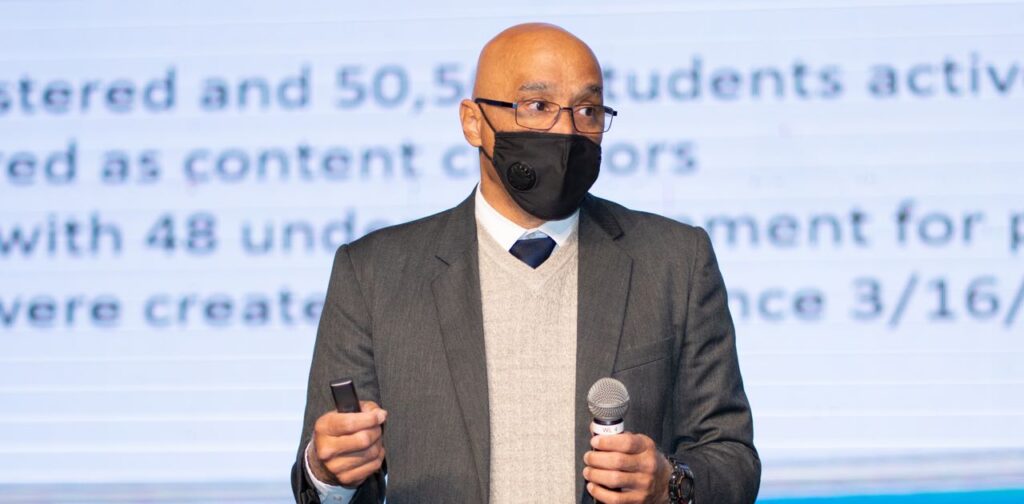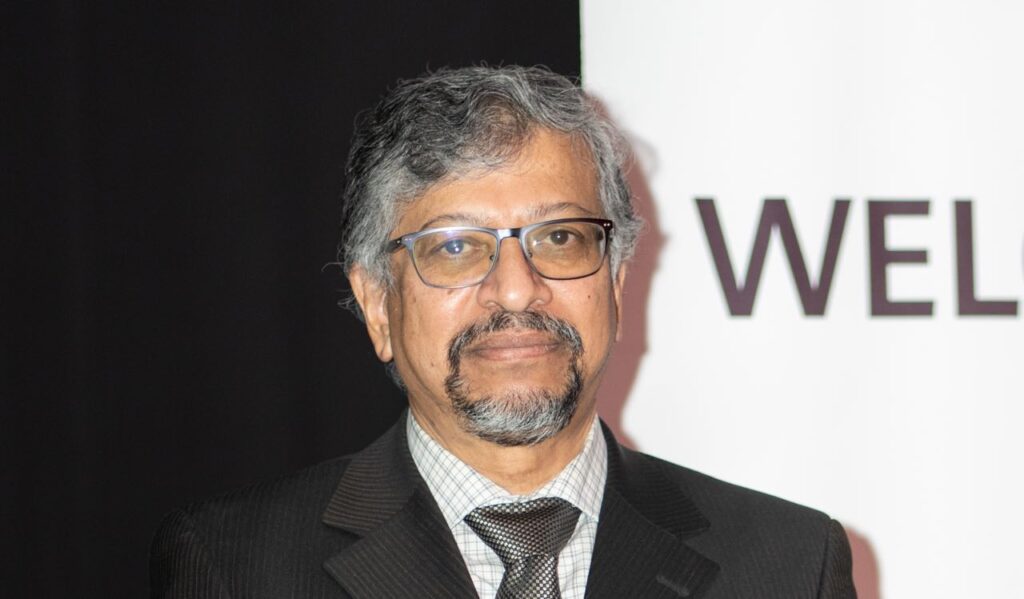Above: Teresa Wankin, Lisa Agard and Dr. Kim Mallalieu in discussion at Huawei’s DigitalTT event. Photos courtesy Huawei.
BitDepth#1329 for November 22, 2021
On its 15th anniversary as a telecommunications infrastructure provider in Trinidad and Tobago, Huawei hosted a discussion on DigitalTT at the Hyatt Regency last Wednesday.
The company has been aggressive about demonstrating its capacity to enable connective technologies as well as the concept of a smart city in previous presentations, but chose to take a backseat at this event.
Stakeholders had an opportunity to discuss strategy and to hear from independent professionals like Alejandro Adamowicz, Regional Strategic Engagement and Technology Director for GSMA Latin America.
Adamowicz pointed to the potential upside of rapid development in technology for the Caribbean and Latin America and pointed to TT’s favourable position compared to other regional countries.
The GSMA places TT in third place for digital infrastructure in Latin America with fixed broadband penetration in households of 88.3 per cent compared to an average of 55 per cent for Latam.
This country also edges most Latam countries with a fourth placing of 60.6 per cent for mobile internet penetration compared to an average of 58 per cent for the region.
Between 2020 and 2030, the GSMA expects to see US$700 billion added to global revenues because of 5G implementation, with specific jumps in services (improving by 40 per cent) and manufacturing (39 per cent.)
The star of the event was Devindra Ramnarine, ICT advisor to the Ministry of Digital Transformation.
Ramnarine spoke on behalf of the minister, Hassel Bacchus, and it’s fair to say that he stole of the minister’s thunder, offering the first clear-cut commitment to specific action from the Digital Transformation Ministry.
Responding to requests from Arima, the ministry will commit significant resources to building out a Connected Arima as a model, or as Ramnarine put it, a ‘use case,’ for how a community might be connected digitally across a range of applications and services.
These range from the eminently useful, such as deploying IoT for local agriculture, to the aspirationally fanciful – what are smart sporting facilities, anyway?
“We want to use this to make the argument, to demonstrate how technology can be used,” Ramnarine said.
The new ministry will operate in three spheres, Digital Society, Digital Economy and Digital Government and work with open-source software as much as possible under a ‘Built by TT for TT’ mindset.
The goal, according to Ramnarine, is: “End to end delivery of services and where appropriate, we will use digital to deliver services.”
Declaring the ministry “willing to fail fast,” Ramnarine committed to working more extensively with established local developer resources and to create a framework that makes better use of home-grown talent.
“We can only do this through partnerships,” Ramnarine said.
“We are looking to partner with everyone, from small to large enterprises.”
The government sees growing the ICT sector as part of growing GDP and will also explore the establishment of Government cloud services and begin making open data available, beginning with spatial data.
It was the most focused and relevant presentation of the day, and the presenters who followed defined the challenge that the Digital Transformation Ministry will face in knitting together existing resources and capabilities into a cohesive effort at creating a more digital nation.

The short three-hour summit, which offered no perspectives from the private sector, could hardly be defined as wide in scope or all-embracing.
TSTT CEO Lisa Agard boasted of the company’s $8.6 billion investment in infrastructure.
Dr. Kim Mallalieu, Senior Lecturer, Department of Electrical and Computer Engineering at UWI, spoke of the many research projects underway at the university.
Kurt Meyer, Permanent Secretary in the Ministry of Education, spoke quite surprisingly, of the ministry’s readiness with learning management software when covid19 hit.
But, it wasn’t clear how all these skeins will magically knit themselves into the digitally-oriented fabric needed to move TT to a computationally advantaged future.
Nor is it clear why the government persists in chasing after a TTWiFi initiative to expand coverage in a country which has been served well by private sector infrastructure expansion, something that might have provoked a snippy remark from Agard.
The Education Ministry’s cheerful evaluation of its performance is belied by its own figures.
Out of a cohort of 225,000 students, just over half, 131,109 are registered in the system and only 50,509 are actually using it.
Worse yet, there is no simple sentence that sums up what all this activity is supposed to lead to.
The TT agenda for the oil and gas sector was driven by a simple imperative, to drill a mountain of money out of this country’s petrochemical reserves.
What is a DigitalTT supposed to deliver and why does nobody seem ready to make that clear?



